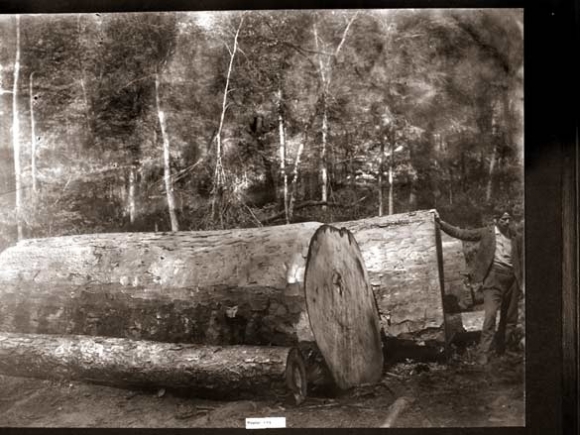Those like myself who don’t admire the end result of these operations (a decimated landscape) nevertheless have to remember that it wasn’t all negative by any means. The timber industry allowed the standard of living for the average worker in the Smokies region to rise exponentially. Mountain men took great pride in having a profession that produced material comforts for themselves and their families. Unlike those mountain men who had to go off and work in the cotton mills after the demise of the logging era, the men who became loggers prior to that time enjoyed, for the most part, working in the woods and woodlots. It was the sort of outdoor, manly work that made total sense to them. And they were superb woodsmen.
An aspect of this profession, however, that wasn't appealing in the least to anyone involved was its inherent dangers. Serious injuries and death were a commonplace of the logging life. I suppose it must be conceded that coal mining was even more dangerous, but logging was a very close second in this regard.
In almost every photograph one sees from that era, an injury-in-waiting can be discerned. Felling a tree in the right direction will always be problematic. Dynamiting a rail bed or splash dam could backfire in a heartbeat. One tiny slip while guiding a huge log onto a railroad car or loading platform with a peavey (a cant hook having a sharply-pointed end) meant the loss of a foot, leg, or life. And so on.
There was no regulated compensation for injured workers or their families until the Workmen's Compensation Act was passed in 1919. Injured workers were simply laid off. When a man was killed on the job, the companies sometimes contributed money or material goods to assist his widow and children, but more often it was his fellow workers who took up subscriptions.
My bedtime reading of late has been Sound Wormy: Memoir of Andrew Gennett, Lumberman (University of Georgia Press, 2002). In one fell swoop, Sound Wormy manages to be perplexing, exasperating, and illuminating at the same time. If you’re at all interested in life in this region as it was conducted in the first half of the 20th century, this is a must read.
Related Items
Andrew Gennett and his brother, Nat, established the Gennett Lumber Company, which during their era operated in northwest South Carolina, north Georgia, and out of sites in Macon, Cherokee, Clay, Graham, and other counties in Western North Carolina. They experienced the ups and downs of the logging industry first hand in all its varied aspects. Andrew Gennett, a lawyer turned timberman, wrote this memoir shortly before his death so that his children and grandchildren would have some notion of the sort of rough and ready life he had led.
“It was during these years in the lumber business that I became impressed with the perversity of inanimate objects,” is the first sentence of Chapter 20 in Gennett’s memoir.
“The lumber industry is exceedingly treacherous …. During the course of our experience in this business, we have had four men killed while felling timber. Each fatal accident was unique in its kind.”
In the first of these felling incidents, some small hickory trees sprang back after a big tree had fallen to the ground. In the second, the top of a rotted basswood tree broke off of the lower trunk while falling. In the third, an inexperienced man was apparently standing in the wrong place and had a tree fall on him. In the fourth, a tree slipped off its stump in the wrong direction and “thrust down a small sapling that struck one of the men on the side of the head, killing him.”
In regard to fatal accidents not involving the felling of trees, Gennett describes two incidents. In the first, a man fell 30 feet off a splash dam and struck his head on a log. In the second, a crew was rolling logs down an inclined skidway onto a wagon. The driver was situated near the wagon. He would release one log at a time and let it roll onto the wagon, confident that the other logs above him were held securely in place. As the released log approached the wagon on the skidway, the driver would simply duck his head and then pop back up when it had passed by overhead. But, alas, the logs above him were not properly secured. Instead, they “came down with full force, and his head was caught between the single log and those coming after. His skull was crushed, and he died immediately.”
Editor’s note: This column first appeared in The Smoky Mountain News in September 2003.
(George Ellison is a naturalist and writer. He can be reached at This email address is being protected from spambots. You need JavaScript enabled to view it..)




